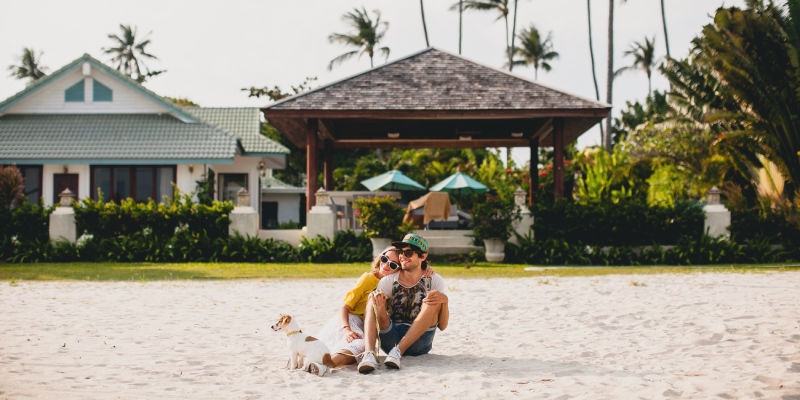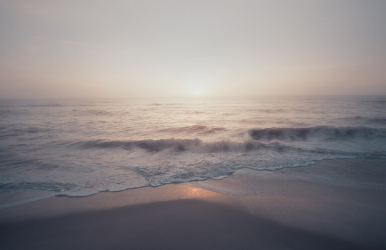Visiting Thailand On Business: 5 Things to Prepare In Advance
BY Sibashree Sep 5, 2025
Every year, Thailand attracts millions of business travellers. While it faces competition from Singapore for the title of Southeast Asia's business hub, its superior size and geographic diversity make it many people's go-to destination for meetings, incentives, conferences, and events (MICE). It's also one of the region's most open economies and an important trading partner for many countries, attracting visitors who are looking to do business with the country as well as in it. Nonetheless, it is a country with its own cultural quirks and unique ways of doing things, and it pays to be prepared if you want your trip to go smoothly. So, whether you're hosting a meeting in Chonburi or attending a conference in Bangkok, here are five important things to make sure you prepare in advance for your business travel in Thailand. Things To Prepare In Advance For Business Travel In Thailand The International Trade Administration has a detailed guideline on business travel in Thailand. There are specific directives on visa requirements, telecommunications, currency exchange, and transportation. However, here, we will talk about the preparations you need to make well in advance. 1. Take Care Of Travel Documents, Copies, And Connectivity Thailand receives many tourists each year due to its relaxed visa requirements for short-stay visitors. However, these generally only apply to visitors who are coming exclusively to sightsee and vacation. If you're planning to do any kind of work, even if it's just a meeting, you'll need to apply for a non-immigrant visa at your local embassy or consulate. This should be done well in advance of your arrival in the kingdom. Make sure: Your Passport has at least 6 months of validity Make copies of your passport and visa Keep copies of your hotel booking and travel documents handy Lastly, make sure you've brought roaming data for your phone to stay in touch with people back home. 2. Ensure That You Have Access To Adequate Meeting Facilities It's important to remember that if you're travelling for business, you'll likely need access to a meeting room. Find out what you can in advance about your hotel's facilities, if that's what you plan on using. Space Equipment Support These are the three most crucial factors. If you need to book a meeting venue last-minute, or your hotel doesn't offer the facilities you need, translate your search, like "book meeting room in Chonburi" into Thai (จองห้องประชุมชลบุรี). You'll see the Thai results too, sometimes with lower rates. But once you click on the websites, there's usually a button to switch the language back to English. 3. Plan Your Recreational Activities Recreational activities are benefits that will carry over into work hours, both on your trip and back home. Thailand offers plenty of choices. Areas like Bangkok and Pattaya are, of course, known for their nightlife, but many modern visitors prefer to book into wellness retreats and spas. Chonburi, which is growing in popularity as a business destination, has a vibrant sports scene. It's home to the Chonburi Bluewave Futsal Club and the Supreme Chonburi Volleyball Club, which are both very popular across the country. 4. Have Access To Finances And Legal Advice As it's a business trip, we're sure you've got your budget covered. However, that means little if you can't access your money when you need it. Make sure that you've informed your company's credit card provider of your travel plans so that they don't block it by mistake. It's also advisable to carry some cash at all times. Card payments are rarely used for everyday transactions, with the locals preferring cash or mobile app payments. Thailand has strict laws around foreign ownership of properties and businesses. You may also have local taxes and labour regulations to consider if you are setting up or investing in a Thai business. It's also sensible to have any contracts reviewed by an expert who understands Thai law. So, get a legal advisor. Moreover, Thailand has recently revised its visa policy. So, the duration of a visa-free stay for foreign tourists is now just 30 days instead of 60 days. This will impact visitors from around 93 countries across the world. This new revision is aimed at controlling illegal business developments, such as unlawful condominium developments, in Thailand. However, when you are traveling with a business Visa, or the Non-Immigrant "B" Visa, you can stay in the country for 90 days. Do you have to suddenly extend your stay for business purposes? You can get in touch with the Immigration Bureau to get approval. Here also, provide the detailed documents and establish your requirements to get the approval. So, irrespective of the country you are from, you need a constant consultation with an immigration expert and a lawyer. 5. Stay Aware About Local Culture And Etiquette The Western approach to business and personal interaction is a lot more direct than the Thai way of doing things. In order to get along well with any Thais you meet and to ensure that your meetings go smoothly, you should honour the local customs. The most important concept to keep in mind is that of "saving face." This is the avoidance of direct or public confrontation with others to save them from embarrassment. Furthermore, you must always address the mistakes in private. Also, you must greet with a traditional gesture, “Wai”, before a handshake. Moreover, respect the hierarchy. Stay Prepared To Make Your Business Travel In Thailand A Success From Chonburi to Chiang Mai, Thailand has many MICE cities that are well-equipped for the needs of business travellers. However, keeping your documents handy and knowing the visa policies are very crucial if you are planning a business travel in Thailand. Also, if your business trip means that you have to work in Thailand, you will need a Thai Work Permit. Moreover, the visa requirements can change in Thailand. Documentation can also get stricter. So, Read the visa policies Know the documents required Consult with an immigration expert Talk to your business counterpart in Thailand Seek legal help regarding documentation if needed All these will ensure a seamless visa application and approval for your next business trip in Thailand. Read Also: 5 Must-Visit Places In Thailand: Should I Go To Phuket Or Krabi? 3 Reasons Why Thailand Is The Ultimate Wellness Destination Thailand Travel Guide: This Is The Best Time To Visit Thailand!















